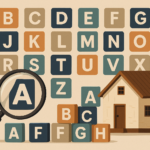Granny flats seem like a smart investment idea, don’t they?
You build a modest dwelling in your backyard, rent it out, and voilà — a little extra income stream.
But before you dive into the idea of building a granny flat on your property, let’s take a closer look.
The reality is that granny flats often fall short of the promise of being a solid, lucrative investment.
Here’s why they might not be as great as you’ve been led to believe.

1. Limited rental returns and capital growth potential
Granny flats are often marketed as cash cows, but their rental income is usually modest at best.
While they can provide a small boost to your cash flow, it’s rarely enough to make a significant dent in your mortgage or drastically change your financial position.
Most importantly, the capital growth potential of properties with granny flats tends to be underwhelming.
Buyers in the future may not see the added value of the secondary dwelling, which means that your property’s overall value might not increase as much as you expect.
2. Narrow tenant appeal
It’s obviously important to consider the type of tenants who might be interested in renting a granny flat.
Typically, these appeal to a niche market — like students, singles, or older individuals.
Families or professionals who can afford to pay higher rents are generally looking for a bit more space and privacy, which a granny flat doesn’t provide.
This narrow tenant pool can lead to longer vacancy periods and a higher risk of inconsistent rental income.
3. Potential impact on your property’s value
Surprisingly, adding a granny flat can actually reduce the appeal of your main property.
The presence of a secondary dwelling on your land might be seen as a negative feature to prospective buyers, especially those looking for privacy and spacious outdoor areas.
In some cases, the addition of a granny flat can make your property look overcrowded or less desirable compared to others in the neighbourhood.
4. Higher costs than expected
The cost of building a granny flat can often exceed expectations.
While they might seem affordable compared to larger developments, hidden expenses can quickly add up.
You’ll need to budget for council approvals in some locations, construction costs, utilities, and ongoing maintenance.
Plus, interest rates and lending criteria for properties with granny flats can be less favourable than for standard residential properties, impacting your borrowing capacity.

5. Regulatory restrictions
Building a granny flat isn’t as simple as plonking a small structure in your backyard.
Each state and council in Australia has its own set of rules, regulations, and zoning requirements.
Navigating these can be complex and time-consuming, and you might face restrictions on the size, design, and even whether you can rent it out to non-family members.
These constraints can significantly limit your investment options.
6. Missed opportunities for better investments
The opportunity cost is perhaps the biggest drawback of investing in a granny flat.
The funds used for construction could be put toward buying a higher-performing property or adding value to your existing home through renovations that appeal to a broader market.
For the same capital outlay, investing in a well-located property with strong growth potential is likely to yield far better long-term returns.

The bottom line
While granny flats can seem like a clever way to boost rental income, they often fall short of delivering the returns that investors expect.
Limited tenant appeal, restrictive regulations, modest rental income, and low capital growth can make them more of a liability than an asset.
Before you jump on the granny flat bandwagon, it’s essential to weigh up whether the investment is truly going to deliver the results you’re after — or if your hard-earned capital could be put to better use elsewhere.














